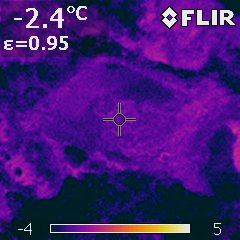biffa
New member
Just came across this:
http://www.kickstarter.com/projects/andyrawson/ir-blue-thermal-imaging-smartphone-accessory
It's a 4x16 pixel that connects to a smartphone and gives a thermal overlay on the smartphones camera. This appeals to my inner geek! The field of view seems to suggest (from the above website) that:
1m = 65x65mm per pixel
10m = 65cmx65cm per pixel
Extrapolating this to 1km would be a 65m square that you get temperature information for. So the question is: would this be any use for trying to locate entrances on expedition by walking up valley sides and looking at the opposite side and trying to find the cold bit? How big is the cold bit around an entrance?
Of course the answer to all these questions is for me to buy the DIY kit for $145.....
http://www.kickstarter.com/projects/andyrawson/ir-blue-thermal-imaging-smartphone-accessory
It's a 4x16 pixel that connects to a smartphone and gives a thermal overlay on the smartphones camera. This appeals to my inner geek! The field of view seems to suggest (from the above website) that:
1m = 65x65mm per pixel
10m = 65cmx65cm per pixel
Extrapolating this to 1km would be a 65m square that you get temperature information for. So the question is: would this be any use for trying to locate entrances on expedition by walking up valley sides and looking at the opposite side and trying to find the cold bit? How big is the cold bit around an entrance?
Of course the answer to all these questions is for me to buy the DIY kit for $145.....



